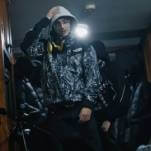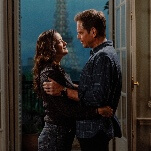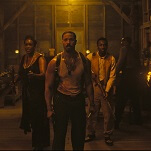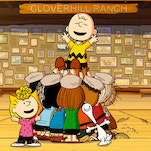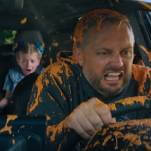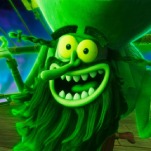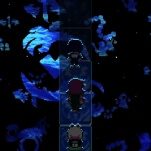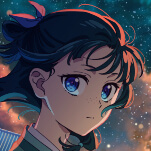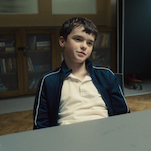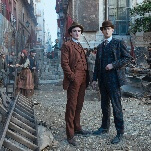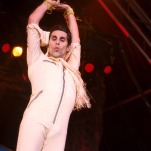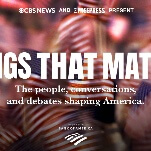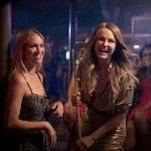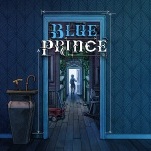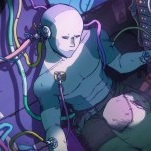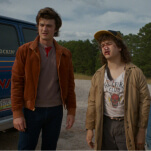2011’s Tales Of The Night returns to the visuals and concepts of Princes And Princesses, with new technological updates. Now, the aged mentor and his two fable-loving friends are operating out of a dilapidated movie theater. (The English dub offers a brief frame story about the senior partner being told he was too old to make films, while his protégés were told they were too young, so they retreated to the theater to make films for their own pleasure. The original French audio track, also on the DVD, has no framing whatsoever, and just offers a series of linked vignettes.) Again, the three principals invent characters for themselves, briefly brainstorming about historical elements, costumes, and plot points. Then they play out stories drawn from different cultures, from Burgundy to Africa to Tibet, packing each one with the idiosyncratic detail of a particular historical era and setting. For all the variety on display, though, the stories have a roughly similar shape, as a protagonist wins the day—and generally, a love interest—via cleverness, loyalty, bravery, and kindness.
There are some minor, unusual twists to these stories, by fairy-tale archetype standards. One Caribbean-based vignette features a feckless wanderer named Ti Jean ending up in the land of the dead, where he has to face three beasts swollen to immense size by hunger. A friendly old man sets him up with treacherous weapons against them, but Ti Jean elects to just feed the three animals, in a rare case of a fairy-tale hero ignoring helpful advice from a stranger, yet still succeeding. (“That guy was one evil grandpa,” Ti Jean mutters as he dumps the man’s booby traps, well out of his sightline.) Another short, based in the Middle Ages, features a girl in thrall to an evil sorcerer who handily defeats her would-be paramour; instead of fighting or confronting the sorcerer, they spend the story fleeing him, with unfortunate results. The subtitles also have some surprises: They’re slangier and funnier than either the English dub or the actual French dialogue.
But most of the uniqueness comes from Ocelot’s phenomenally rich backgrounds, and from these stories’ fundamental earnestness. In an irony-soaked, playfully meta age, they feel like a throwback to an earlier time not just in their imitation of early animation, but also in the way the characters pursue broad, clear goals of friendship or love, and bluntly express exactly what they think, which is almost always a variation on, “I want my unique talents to be appreciated and my desire to be vindicated.” The repeated message carries through to the frame story, where three outcasts gleefully tell whatever stories they like without needing the world’s appreciation. And it extends further to Ocelot, still telling these particular, peculiar stories in his own highly specific way.
Key features: A short but informative video interview with Ocelot and a featurette about his making-of presentations for kids at a UNICEF event. Not on the disc: the original theatrical 3-D version of the film.


